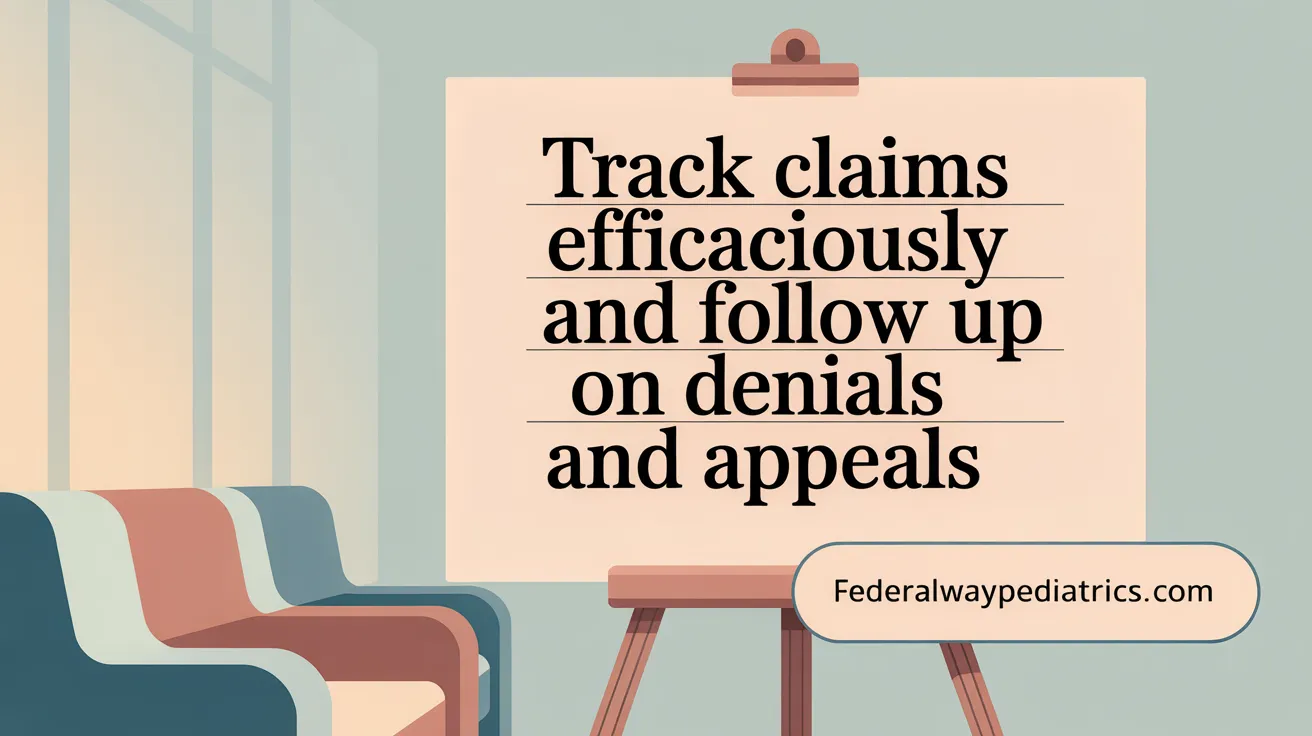Navigating Pediatric Insurance and Self-Pay
Understanding pediatric care insurance and managing self-pay options can be challenging for families. With multiple insurance types, coverage requirements, and potential out-of-pocket costs, knowing how to navigate these complexities is crucial for ensuring children receive the care they need without undue financial strain. This guide offers seven practical tips to help families make informed decisions and manage pediatric healthcare expenses effectively.
Key Facts List: Insurance and Pediatric Therapy
- Verify insurance coverage before appointments to confirm what services are covered and avoid unexpected expenses.
- Public programs like Medicaid and CHIP provide comprehensive, low-cost healthcare for eligible children based on income criteria.
- Medical necessity letters from physicians are crucial to justify and secure insurance approval for therapy and equipment.
- HSAs and FSAs allow families to save pre-tax dollars for healthcare expenses, reducing overall costs.
- Implement clear self-pay policies with incentives and prompt payment strategies to improve collection rates from families.
- Utilize grants, subsidies, and sliding fee scales to make pediatric therapy affordable and accessible for low-income families.
- Proactive communication with providers and insurers helps address claim denials early and facilitates smoother approval processes.
- Track claims and denials thoroughly; documentation supports appeals and fosters successful insurance claims processing.
- Apply for continuous coverage under Medicaid and CHIP to prevent interruptions in pediatric healthcare services.
- Consult resources on insurance benefits and appeals frequently to stay informed and advocate effectively for pediatric healthcare needs.
1. Verify Insurance Coverage and Understand Plan Details Before Appointments

Importance of Verifying Insurance Benefits
Before scheduling any pediatric therapy or medical appointment, it is essential to verify your child’s insurance coverage. Most health plans cover therapy services such as physical, occupational, speech, and ABA therapy, but coverage can vary widely. Contacting your insurance provider helps to confirm which services are covered under your plan and prevents unexpected denials.
Understanding Co-pays, Deductibles, and Coverage Limits
Pediatric insurance plans often have co-pays, deductibles, and limits on the number of covered visits. Knowing these details ahead of time ensures you are prepared for any out-of-pocket expenses. For example, some plans require co-payments ranging from $5 to $20 per visit and have specific limits on therapy sessions per year.
Prior Authorization and Referrals
Many insurance plans require referrals from pediatricians or specialists before therapy services can be authorized. Additionally, certain therapies may need prior authorization in insurance where the insurer reviews the proposed treatment plan. Obtaining these authorizations in advance avoids appointment cancellations or claim denials.
Checking In-Network Provider Status
Visiting in-network providers typically reduces costs significantly and guarantees that insurance benefits are fully applied. Confirm that the therapy provider or pediatrician is listed as in-network on your insurance plan to maximize benefits and minimize out-of-pocket payments, as recommended for navigating insurance for therapy services.
Verifying insurance coverage thoroughly before appointments is a vital step for families navigating pediatric healthcare to ensure coverage and avoid financial surprises.
2. Leverage Public Insurance Programs Like Medicaid and CHIP

What are the eligibility criteria for Medicaid and CHIP?
Medicaid primarily serves low-income families, children, pregnant women, and individuals with disabilities, with eligibility varying by state and based mostly on family income. CHIP targets children in families earning too much for Medicaid but too little to afford private insurance. Typically, children under age 19 qualify if their family's income falls within specific thresholds relative to the federal poverty level. Learn more about Medicaid and CHIP eligibility and specific health care coverage for Texas children.
What comprehensive care do Medicaid and CHIP provide for children?
Both programs offer wide-ranging coverage, including routine checkups, immunizations, doctor visits, prescriptions, dental and vision care, hospital stays, emergency services, laboratory tests, and behavioral health interventions. CHIP often covers similar services to Medicaid but may feature some state-specific enhancements. Detailed benefits and coverage can be found in the Children's Health Insurance Program overview and the Affordable Care Act preventive care for children.
How can families apply, and what are the benefits of continuous coverage?
Applications for Medicaid and CHIP can be submitted any time through online portals, phone calls, or designated local agencies. Once eligible, many states provide continuous coverage—commonly 12 months for children—to reduce interruptions, ensuring access to essential care and improving health outcomes. Guidance for applying and ongoing coverage is explained at the CHIP application process and information on Continuous Coverage in Medicaid and CHIP and continuous coverage and CHIP improvements.
What cost-sharing limits and preventive services are covered?
Medicaid generally imposes no cost-sharing for children, while CHIP may have modest copayments and premiums capped at 5% of family income, keeping care affordable. Both programs cover preventive services without copays, including well-child visits, immunizations, and screenings, encouraging early diagnosis and health promotion. See more about preventive care covered for children and cost sharing under CHIP.
By leveraging these public insurance programs, families can secure comprehensive, affordable healthcare coverage for their children, protecting them from high medical costs while ensuring consistent access to vital pediatric services. For assistance with navigating insurance for therapy services and understanding health insurance for children, visit the related resources.
3. Obtain Medical Necessity Documentation to Support Therapy and Equipment Coverage

Why are medical necessity letters important for pediatric therapy and equipment coverage?
Medical necessity letters are vital documents written by a child's physician that justify the need for specific therapy services or medical equipment. These letters detail the child's diagnosis, treatment history, and the necessity of the proposed care, helping to secure insurance approval and prevent claim denials. For more details on medical necessity letter and navigating pediatric therapy insurance, see insurance coverage for pediatric therapy.
How do pediatrician referrals and detailed prescriptions impact coverage?
Many insurance plans require referrals from pediatricians or specialists before authorizing therapy services or medical devices. Prescriptions and referrals must include specific details such as the beneficiary’s name, physician’s name, a clear description of services or equipment, and the physician's National Provider Identifier (NPI). Precise documentation reduces the risk of claim denials and facilitates smoother insurance processing. Refer to navigating insurance coverage for pediatric medical supplies and verifying insurance benefits for therapy for guidance.
What supporting documentation can aid insurance claims?
Families can strengthen claims by providing supplemental evidence, including photos and videos documenting the child's condition and progress. Such documentation illustrates the medical necessity, particularly for therapies and durable medical equipment, making it easier to appeal insurance decisions if needed. For tips on supporting documentation and appeals, see navigating insurance for therapy services and insurance plan documents review.
How to appeal denials with proper documentation?
If a service or equipment request is denied, submitting an appeal supported by the medical necessity letter, prescriptions, referrals, and any additional documentation greatly increases the chance of approval. This process may also involve preauthorization requests and engagement with state or federal insurance departments for external reviews when necessary. For more information, consult resources on filing insurance appeals and navigating insurance coverage for pediatric medical supplies.
4. Utilize Health Savings Accounts and Flexible Spending Accounts for Cost Management

What are HSAs and FSAs?
Health Savings Accounts (HSAs) and Flexible Spending Accounts (FSAs) are special savings accounts that allow families to set aside pre-tax dollars to pay for eligible healthcare expenses, including pediatric therapy and medical services.
Advantages of HSAs and FSAs for Pediatric Expenses
- Use pre-tax income, which lowers taxable income and saves money.
- Funds can cover co-pays, deductibles, therapies (like physical, occupational, speech, and ABA), medical supplies, and prescription medications.
- HSAs roll over unused funds year to year, while FSAs often require use within the plan year, helping families plan budgets effectively.
How They Ease Financial Burden
By allowing families to pay for out-of-pocket pediatric healthcare expenses with pre-tax dollars, HSAs and FSAs reduce the overall cost burden. This is especially valuable when insurance co-pays and visit limits or non-covered services apply.
Integration with Insurance Plans
HSAs are typically paired with high-deductible health plans, encouraging families to save for medical costs. FSAs are offered through employers and can be used alongside various insurance types. Both accounts complement insurance by covering costs that insurance might not fully pay.
Families should verify eligible expenses and coordinate benefits with their insurance provider to maximize these accounts' benefits, as explained in this resource on navigating insurance and therapy services.
5. Prepare for Self-Pay by Establishing Clear Payment Policies and Offering Incentives

Creating Transparent Self-Pay Policies
Clear self-pay policies should be developed by pediatric providers to ensure families understand their financial responsibilities before receiving services. These policies outline the payment expectations, including full payment at the time of service or timely billing after the visit. For more detailed guidance on self-pay policy creation, including staff training and communication strategies, see resources from Assistentcy.
Communicating Policies to Families
Effective communication of payment policies is essential. Staff should inform families about self-pay terms at the time of scheduling or upon check-in. Providing written documentation or having policies accessible on the practice’s website helps reduce confusion and increases compliance. Techniques such as using scripts and role-playing can help staff effectively communicate policies (source).
Strategies for Collecting Payments Upfront or Promptly After Service
Collecting at least a partial payment before or immediately following the appointment supports better payment completion. Utilizing multiple communication methods such as phone reminders, emails, and mailed statements keeps families informed of balances. Consistent follow-up from the day of service helps improve collections (source.
Offering Discounts or Incentives to Encourage Timely Payment
Offering discounts for paying in full or incentives such as a reduced fee for cash payments encourages families to meet payment obligations more quickly. These incentives not only improve cash flow but also foster goodwill with patients and families. Strategies for incentivizing timely payments can be found in detailed financial policy discussions (source.
Efficient self-pay management combines transparent policies with proactive communication and motivating incentives to improve payment rates and support financial sustainability for pediatric providers.
6. Take Advantage of Grants, Subsidies, and Sliding Scale Payment Options

What sources of financial assistance are available for families needing pediatric therapy?
Families seeking pediatric therapy services can explore various financial support avenues that help reduce out-of-pocket expenses. Many insurance plans provide insurance coverage for pediatric therapy, but additional assistance through grants and subsidies for therapy services and Sliding Fee Scale Programs in Healthcare provides crucial help to families facing financial challenges.
Are grants and subsidies available to help pay for pediatric therapy?
Yes, there are grants and subsidies designed to ease the financial burden on families. Public programs like Medicaid support for pediatric therapy and Children's Health Insurance Program (CHIP) offer low-cost or free coverage for eligible children, assisting with doctor visits, therapies, and more. Moreover, some local and state programs provide grants targeted at therapy services, helping families afford specialized care their children need.
How do sliding fee programs based on income work?
Many clinics and hospitals operate sliding fee scale programs where payment amounts are adjusted according to family income. This ensures services remain accessible regardless of financial status. Families can qualify through confidential income verification, allowing for reduced fees or no charges, which is essential in keeping consistent care for children who require ongoing therapy. For example, Pediatric Associates' sliding fee discount program bases discounts on income to improve affordability.
How do healthcare providers support cost reduction?
Some pediatric therapy providers, such as Lumiere Children’s Therapy insurance acceptance and Pediatric Associates, work with major insurance carriers and participate in state programs, verifying benefits and collaborating with families. They may offer sliding fee discounts and accept Medicaid or CHIP to maximize coverage. Providers also often help families navigate insurance for therapy services to minimize unexpected expenses.
By utilizing these financial assistance options—grants and subsidies for therapy services, sliding fee programs, and supportive providers—families can better manage therapy costs while ensuring essential care for their children.
7. Communicate Proactively with Providers and Insurers to Navigate Denials and Claims

Importance of Early and Regular Communication
Maintaining early and continuous communication with your child’s healthcare providers and insurance companies is crucial. This approach helps address potential insurance coverage for pediatric therapy issues before they delay care. Understanding Navigating Health Insurance for Families and sharing up-to-date information ensures smoother service authorization and billing.
Requesting Preauthorization and Documentation
Many insurance plans require Prior Authorization in Insurance for therapies and medical equipment. Obtaining a medical necessity letter from your child’s physician, which details diagnosis and treatment needs, can reduce denial risks. Clear documentation accompanying prescriptions and referrals strengthens claims.
Tracking Claims and Denials Carefully
Keep thorough records of submitted claims, denials, and communications with insurers. Documenting interactions and maintaining copies of medical letters, prescriptions, and photos or videos of your child’s condition can support your case when coverage is challenged. This is essential in filing insurance appeals effectively.
Filing Appeals and Seeking Help
If a claim is denied, you have the right to request reprocessing and file formal appeals. Support from state or federal insurance commissioners and patient advocacy groups can assist in navigating bureaucratic hurdles. Persistent follow-up is often necessary to secure coverage for needed pediatric services and supplies, as detailed in guidance on insurance coverage for pediatric therapy.
Empowering Families for Pediatric Care Success
Effectively navigating pediatric care insurance and self-pay options empowers families to secure necessary healthcare for their children without undue financial stress. By verifying insurance details, utilizing public programs, obtaining proper documentation, leveraging financial accounts, establishing clear payment policies, seeking financial assistance, and maintaining proactive communication, parents and caregivers can confidently advocate for their children’s health needs. Armed with these tips, families are better equipped to manage complex insurance landscapes and self-pay scenarios, ensuring children receive timely, comprehensive care.
